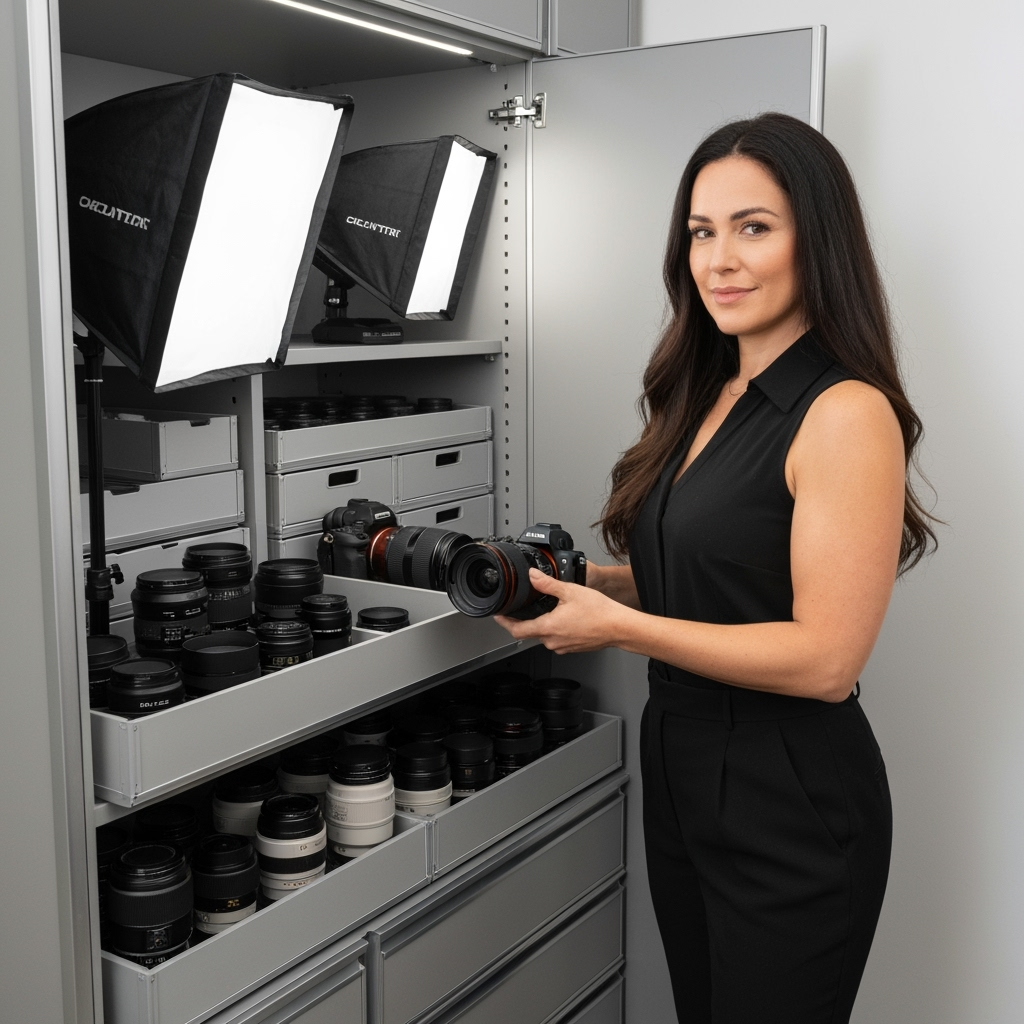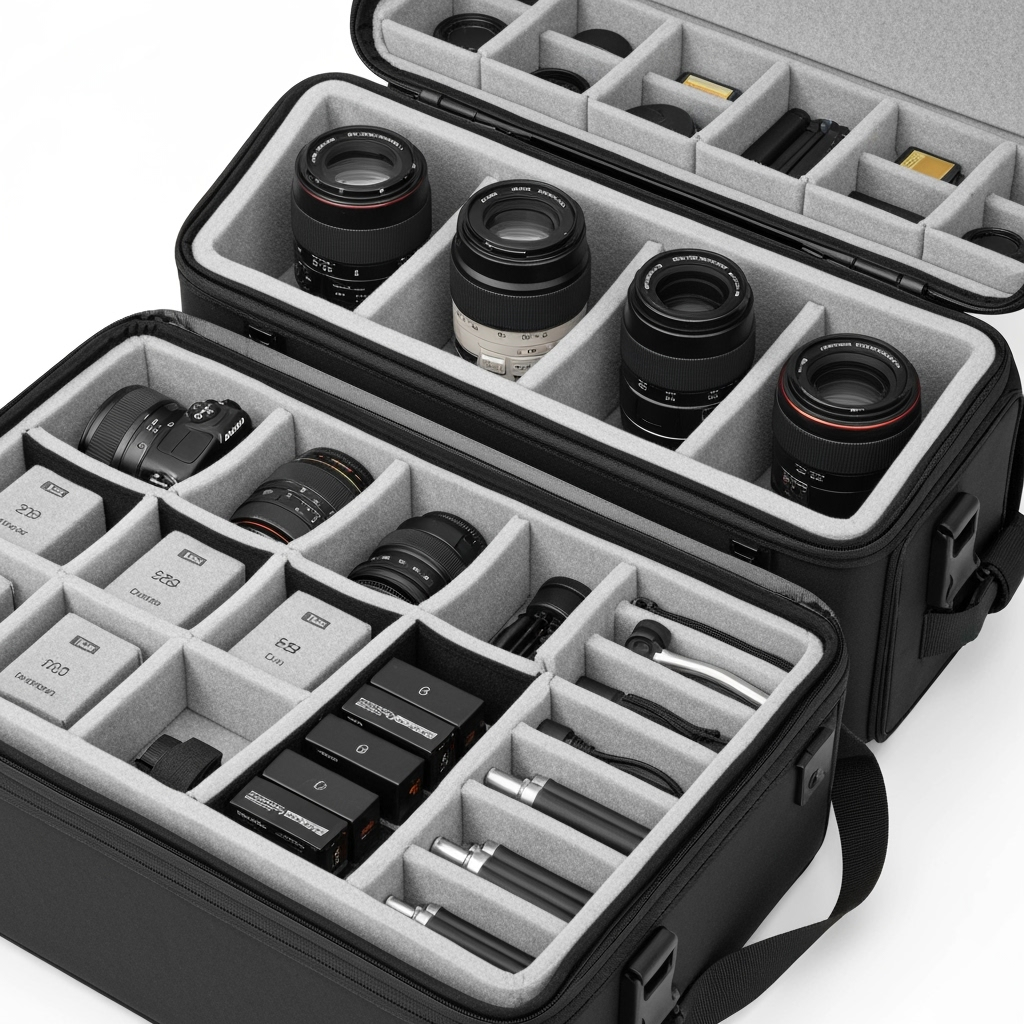Understanding the Importance of Proper Photography Equipment Storage
As a photographer or content creator, your equipment represents both a significant financial investment and the tools of your trade. Proper storage isn’t just about organization – it’s about protecting your gear and ensuring its longevity. Whether you’re a professional photographer with an extensive collection of equipment or a content creator managing multiple cameras and accessories, the right storage solution is crucial for maintaining your gear’s performance and value.

Climate-Controlled Storage: A Must for Photography Equipment
Your cameras, lenses, and accessories are sensitive to environmental conditions. Temperature fluctuations and humidity can lead to fungal growth in lenses, deteriorate electronic components, and damage delicate mechanisms. Here’s why climate-controlled storage is essential:
- Maintains consistent temperature between 65-75°F
- Controls humidity levels to prevent moisture damage
- Protects against dust and environmental contaminants
- Prevents deterioration of electronic components
Organizing Your Photography Storage Space
Creating an efficient storage system helps protect your equipment and makes it easily accessible when needed. Consider these organization strategies:

Essential Storage Solutions for Different Types of Equipment
- Camera Bodies: Store in padded cases with silica gel packets
- Lenses: Use individual lens cases and store upright
- Lighting Equipment: Protective cases with foam padding
- Accessories: Organized drawer systems or clear containers
- Memory Cards: Waterproof, static-free storage cases
Security Considerations for Valuable Equipment
Protecting your investment goes beyond physical storage conditions. Implement these security measures:
- Choose a storage facility with 24/7 surveillance
- Use high-quality locks on your storage unit
- Consider insurance coverage for stored equipment
- Maintain an updated inventory with serial numbers
Seasonal Storage Tips for Photography Gear
Whether you’re storing equipment between seasons or managing overflow inventory, follow these best practices:
- Clean all equipment thoroughly before storage
- Remove batteries from devices
- Check equipment regularly for any issues
- Rotate stored equipment to prevent static storage damage
Creating a Professional Equipment Check-In/Out System
For photography businesses or studios, implementing a structured system helps track equipment use and maintenance:
- Digital inventory management system
- Equipment condition documentation
- Maintenance schedule tracking
- Usage history records
Long-Term Storage Considerations
When storing equipment for extended periods, additional precautions are necessary:
- Use appropriate packaging materials
- Create detailed storage location maps
- Implement regular maintenance checks
- Monitor environmental conditions consistently
Making the Most of Your Storage Space
Maximize your storage unit’s efficiency with these organizational tips:
- Install adjustable shelving systems
- Use clear storage containers for visibility
- Label everything clearly and consistently
- Create designated zones for different types of equipment
Professional Storage Solutions for Every Budget
Whether you’re a hobbyist or a professional studio, there’s a storage solution that fits your needs:
- Small units for personal equipment collections
- Medium spaces for growing businesses
- Large units for professional studios
- Custom solutions for specialized equipment
Conclusion: Protecting Your Photography Investment
Proper storage of photography equipment is an essential investment in your business or hobby. By choosing the right storage solution and following these guidelines, you can ensure your valuable equipment remains in perfect condition and ready for use whenever you need it. Remember, the cost of proper storage is minimal compared to the value of the equipment you’re protecting.










Leave a Reply